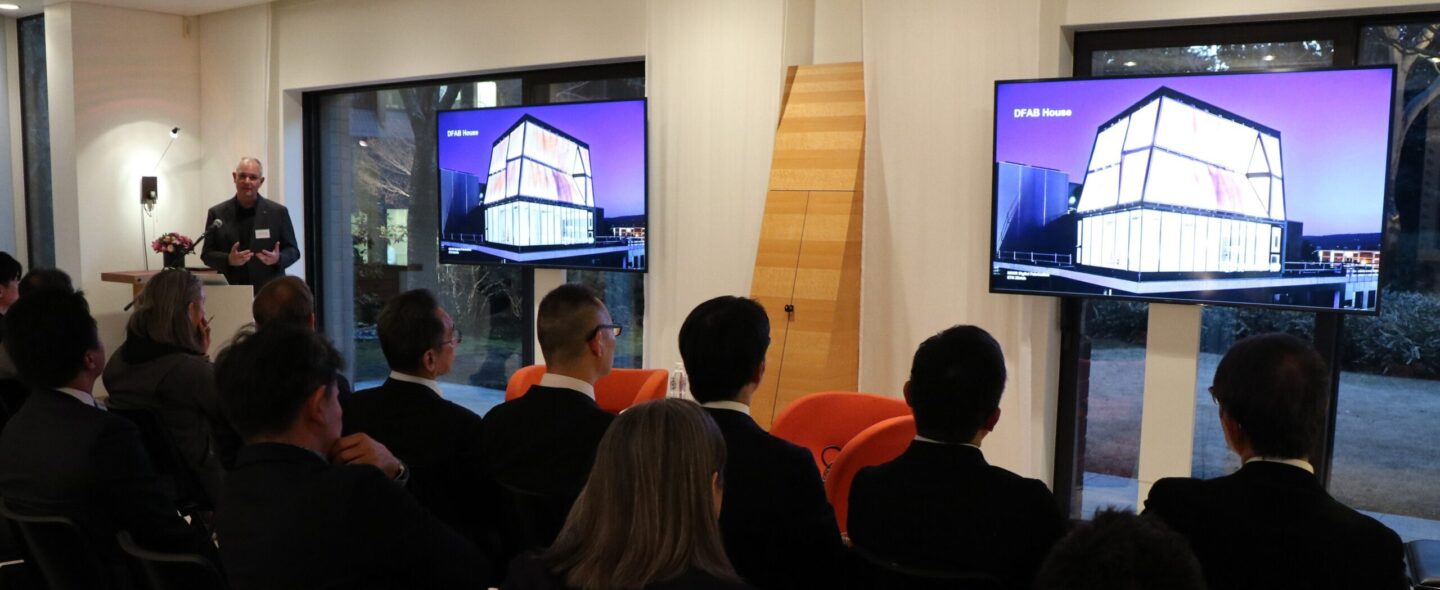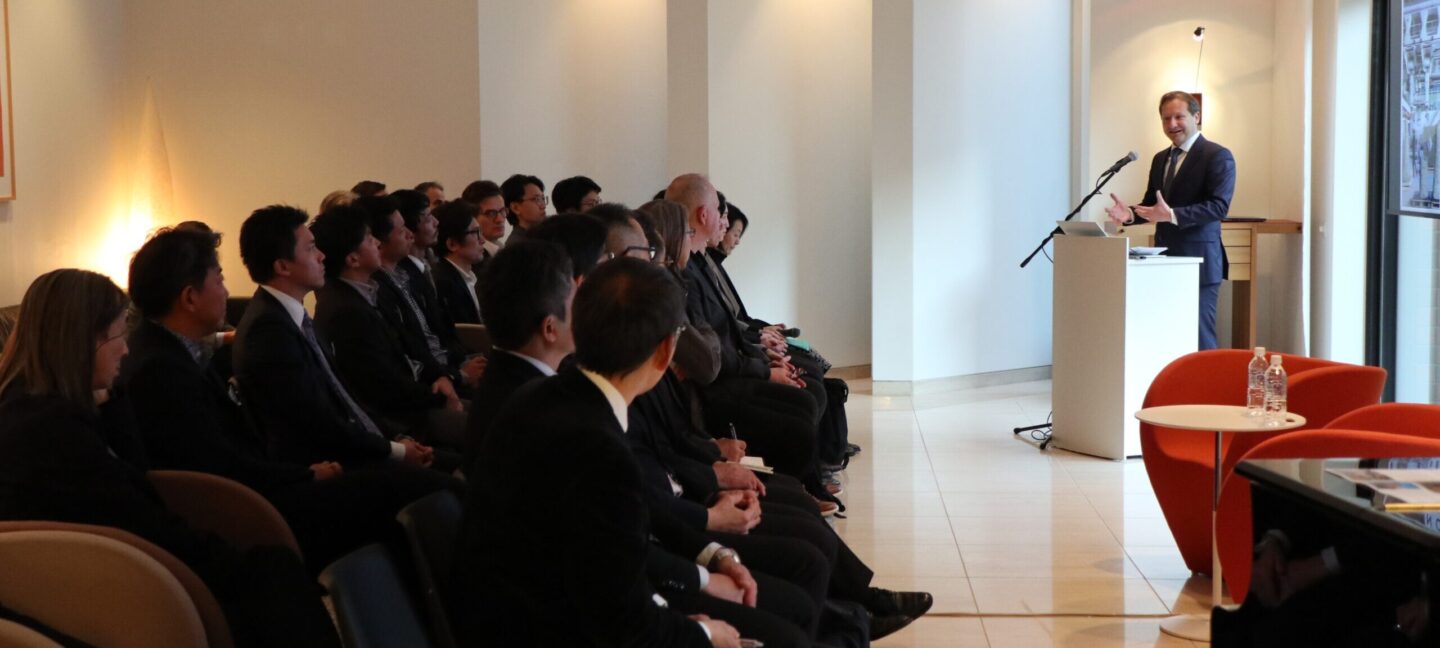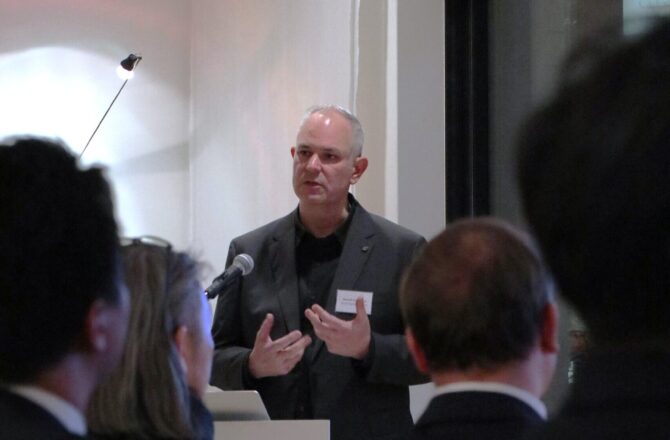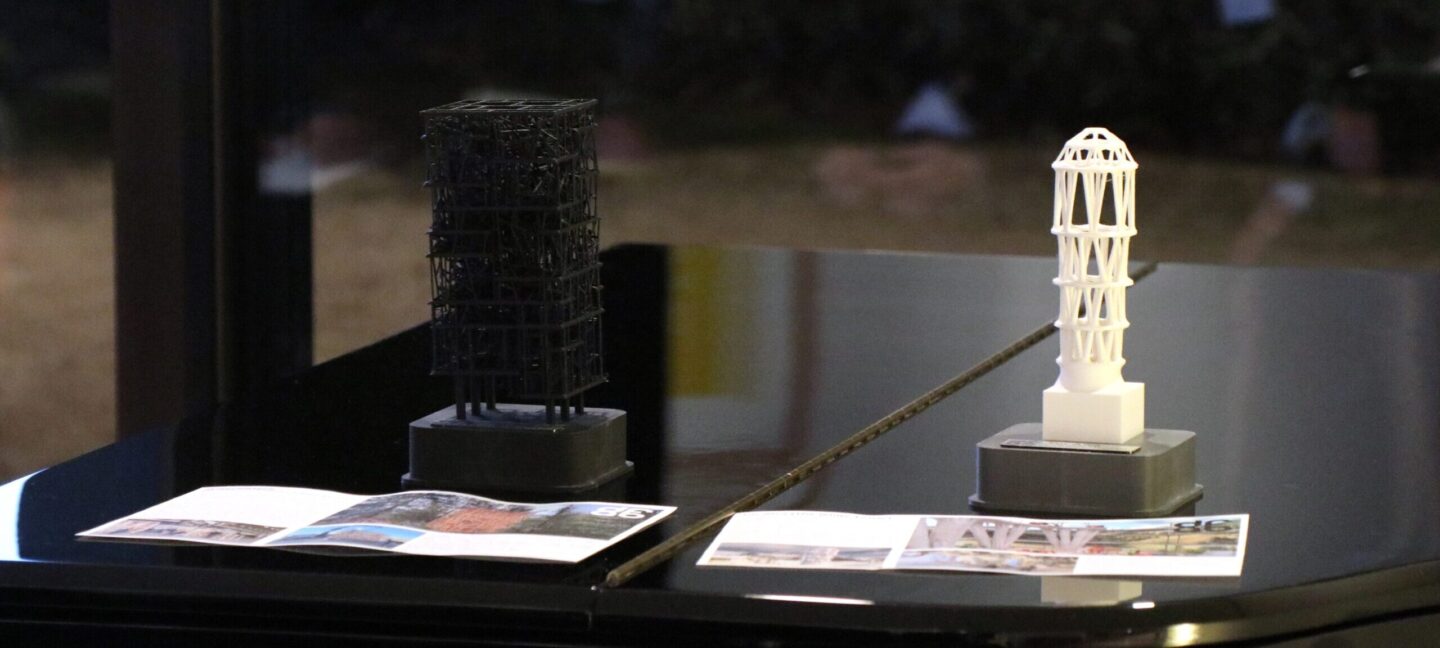

The Ambassador of Switzerland to Japan, H. E. Mr. Roger Dubach, opened the event by emphasizing the strong ties and mutual respect between Switzerland and Japan in architecture, construction, and digital innovation. Switzerland’s advancements in digital fabrication, driven by the NCCR D-Fab, were praised for fostering interdisciplinary and international partnerships. The Ambassador concluded by expressing gratitude for the enduring partnerships and invited attendees to look forward to further Swiss innovative contributions, such as those to be showcased at the Swiss Pavilion during Expo 2025 in Osaka Kansai.

Dr. Russell Loveridge,
Managing Director,
National Centre of Competence in Research Digital Fabrication (NCCR D-Fab)
Dr. Loveridge then took the stage to present the results of over a decade of research advancing next-generation technologies in digital fabrication. He started by introducing the structure of the NCCR D-Fab, a federally funded Swiss initiative leading the development and integration of digital technologies within the fields of architecture and construction. It reunites over 100 researchers from six different academic disciplines: architecture, civil engineering, mechanical and robotics engineering, materials science, computer science, and control systems engineering. Initiated at ETH Zurich, it is partnered with EPFL, the Hochschule für Technik Rapperswil, the Lucerne University of Applied Sciences and Arts, the Bern University of Applied Sciences, and Empa.
He explained that the center’s projects often appear quite unconventional as they push the boundaries of what is possible. Their aim is to explore these limits and then distill the projects into something useful for society, including the construction industry. A distinctive feature of the center is that they test their projects in real-world environments, gaining valuable experience with actual construction projects. Dr. Loveridge also presented concrete examples, some of which have led to the creation of spin-off companies. He highlighted four of these spin-offs in particular:
Gravis Robotics – Focuses on automating heavy machinery, particularly in the construction sector. With over a decade of experience in construction robotics, they have developed advanced robotic excavators designed to enhance efficiency and safety on work sites. Their solutions range from advanced teleoperation to full autonomy, aiming to revolutionize traditional construction practices.
Vaulted AG – Specializes in the development of innovative flooring systems. Their solutions focus on creating efficient, sustainable, and architecturally appealing floor structures. By developing advanced design and fabrication techniques, Vaulted AG aims to provide flooring options that meet modern building requirements while reducing material usage and environmental impact.
Mesh AG – Has expertise in robotic fabrication of rebar structures for the construction industry. Their proprietary MESH Rebar Printer creates 3D rebar configurations directly from CAD designs, enabling the construction of complex, doubly curved, and fully reinforced walls without the need for expensive formwork.
Saeki Robotics AG – Offers on-demand additive manufacturing services for large parts with complex geometries. Their approach combines 3D printing with milling and integrates machining and inspection processes to deliver production-quality parts efficiently. They cater to industries such as automotive, construction, aerospace, and industrial sectors, providing rapid turnaround from prototype to production.

The presentation was followed by an exchange between Dr. Loveridge and Prof. Yusuke Obuchi, Associate Professor at the University of Tokyo who has been in close collaboration with the NCCR D-Fab for several years. The exchange was conducted in the form of an interview with Prof. Obuchi asking well-suited questions allowing Dr. Loveridge to explain more extensively the NCCR D-Fab structure and relation with industry.
Dr. Loveridge shared more insights into the center's unique 12-year structure, which comprises three cycles of four years. This timeframe has allowed for the development of three generations of PhDs, who were pivotal in generating initial innovative ideas. The master students were then tasked to further explore and expand upon these ideas. The center's progress is meticulously evaluated annually by a panel of international experts, whose feedback has driven continuous progress across various dimensions, including interdisciplinary collaboration, the measurability of success, and sustainability assessments for each project.
The discussion also shed light on the evolution of the center's relationship with the industry. A decade ago, gaining industry partnerships was a significant challenge as the center’s activities were so avant-garde. However, today, companies proactively seek collaboration with the NCCR D-Fab, a testament to the center's credibility and the impact of its projects. One notable strength that brought positive recognition is its focus on buildability in real life. The center has earned acclaim for constructing actual buildings, with, for instance, the Tor Alva project making global headlines as it prepares to become the tallest 3D-printed tower ever erected. The tower is expected to infuse new values and attractions to the region.
The subsequent Q&A session with the audience also addressed various challenges, such as cost considerations and the role of architects in these innovative projects. Dr. Loveridge's presentation resonated deeply with the audience, leading to several fruitful meetings in the days following the event. One of the construction companies in attendance is planning to visit the DFAB House next month.
As the NCCR D-Fab approaches the end of its 12-year funded research period, this event provided a meaningful opportunity to connect with a targeted audience that responded with high interest, and many follow-up activities. The new connections forged on this occasion are expected to facilitate future collaborations and carry on the legacy of the center's mission of advancing cutting-edge research and innovation in the construction industry.



